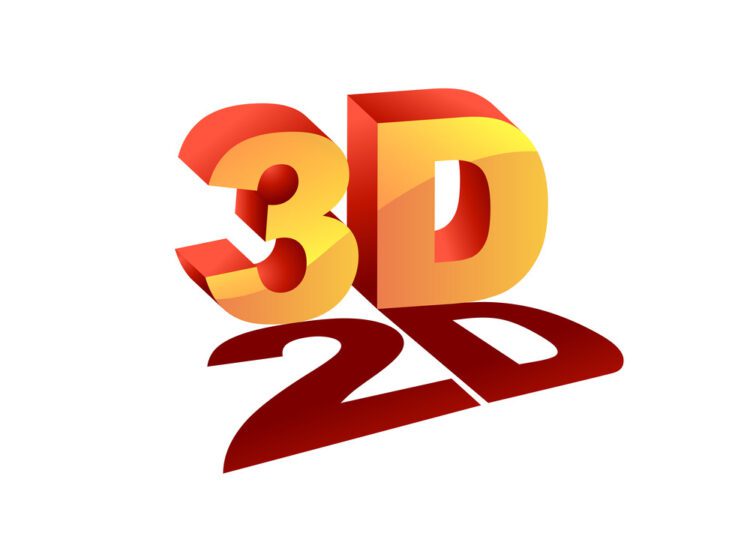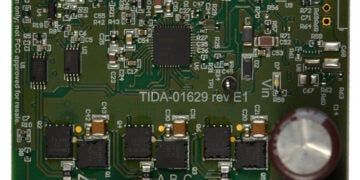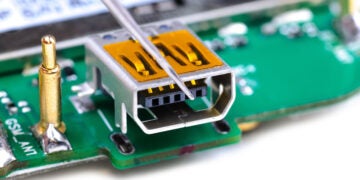 Traditionally, PCB design is performed from a 2D perspective. This is true for both schematic capture and PCB layout. However, it is becoming increasingly common for a 3D perspective, often used for mechanical design, to be incorporated into the process. One example is when the component, board, or device will be created using a 3D printer. A 3D design model is also essential for system development by OEMs and ODMs that build and supply encapsulated electromechanical products to their customers.
Traditionally, PCB design is performed from a 2D perspective. This is true for both schematic capture and PCB layout. However, it is becoming increasingly common for a 3D perspective, often used for mechanical design, to be incorporated into the process. One example is when the component, board, or device will be created using a 3D printer. A 3D design model is also essential for system development by OEMs and ODMs that build and supply encapsulated electromechanical products to their customers.
Cases and enclosures protect internal components and circuits from their environment and restrict access where unauthorized tampering could cause system failure or be unsafe. When PCBAs and their enclosures are co-designed, the process is known as ECAD/MCAD integration. A common design file format is necessary for the best implementation of this process. And the 3D STEP file is one of the most often utilized.
What Are STEP Files?
Formerly known as the “Standard for the Exchange of Product Data” format, STEP files, typically identified by the ‘.STEP’ or ‘.STP’ extensions, are utilized for designing products for a wide range of applications. For example, ISO 10303 comprises over 20 application protocols, which specify requirements for all phases of product development, including AP 242, which is utilized for 3D model-based engineering and ECAD/MCAD.
A 3D STEP file provides the CAD model details of a design. The model may represent an individual component or an electronic circuit board design for ECAD. However, as listed below, the benefits that simplify integration with an MCAD stage promote the use of STEP files for PCBA development.
3D STEP File Advantages for ECAD/MCAD integration
- ★ Design is stored as a single unit
Other formats, such as the Initial Graphics Exchange Specification (IGES) and Standard Tessellation Language (STL), only capture surface model data, while STEP files provide data on the entire body of the design.
- ★ More accurate than other formats
In addition to providing more detailed data, STEP files allow for editing without loss of accuracy.
- ★ Neutral CAD format
The STEP file format is an international standard defined in ISO 10303.
- ★ Compatible with most design programs
The STEP format has been around since 1994 and is widely accepted and used by most ECAD and MCAD programs.
There are many CAD file formats available; however, the advantages listed above are among the reasons electronics product developers implement the 3D STEP file format most.
The 3D STEP File AP 242 Format Explained
AP 242, the definitive protocol for electronics-based product development, combines or merges two previously defined protocols: AP 203 and AP 214. The applicability of AP 242 for PCBA and circuit board-based system design can best be appreciated by examining the contributions from these protocols with new additions, as shown in the table below.
|
3D STEP FILE FORMAT OVERVIEW |
|||
|
Attribute |
From AP 203 |
From AP 214 |
AP 242 |
|
Scope |
Parts and assemblies; configuration control; |
Parts, assemblies, and tools for manufacturing; configuration control; process plan; |
AP 203 and AP 214 |
|
Focus |
Control configuration of design phase |
Design changes; security; classification; approval |
AP 203 and AP 214; Archiving; digital rights management (DRM); 3D semantics; mechatronics |
|
Specifications |
Dimensions and tolerances; validation properties; annotation text,;layers; colors; history of construction; Product Data Management (PDM) definitions |
Geometric data; kinematic structures; other format references; tolerances |
AP 203 and AP 214; 3D shape quality, constraints, piping; kinematics assembly |
As shown above, the AP 242 application protocol is an improvement on both AP 203 and AP 214–both of which were primarily targeted toward automotive system development–and includes a focus on integrating mechanical and electrical/electronic design. This evolution has helped propel the 3D STEP file to its status as the most implemented format for ECAD/MCAD system development.
How to Best Utilize 3D STEP Files for Your Electronics Project
Using a non-native file format for 3D CAD modeling components and circuit boards adds flexibility to your development process. However, for the most efficient product development, you should employ a 3D design perspective that includes the guidelines below.
Using 3D STEP Files for ECAD/MCAD Integration
- Make sure to use accurate 3D component models
3D design begins with the components. And the accuracy of your parts CAD models directly affects the efficiency of the time and costs of the build process. Therefore, manufacturer-verified symbols and footprints must be used and accurately and quickly accessible 3D CAD data format. - Use an ECAD design program with STEP file functionality
Today, many PCBA design tools include the ability to export your design in different formats. This functionality promotes team collaboration, provides you with options for having your boards manufactured and makes it easier to work with MCAD engineers for complete system development. - Collaborate with MCAD designer to make any necessary design changes
With few exceptions, all circuit boards are installed in a case, enclosure or are part of a larger system. Therefore, it is necessary that your design be available in a format that MCAD designers use. 3D STEP files fulfill this requirement. Additionally, this format allows for design collaboration in a single format when any modifications and/or changes are necessary.
When working with 3D STEP files, it is imperative that you have the ability to verify the accuracy of your design throughout development. Therefore, a 3D STEP file viewer is required. And for optimization of your ECAD/MCAD process you also need 3D STEP file editing capability, which is available with leading design packages.
If you’re looking for CAD models for common components and design best practices for using PCB development models like the 3D STEP file, Ultra Librarian helps by compiling all your sourcing and CAD information in one place. Working with Ultra Librarian sets up your team for success to ensure streamlined and error-free design, production, and sourcing. Register today for free.








